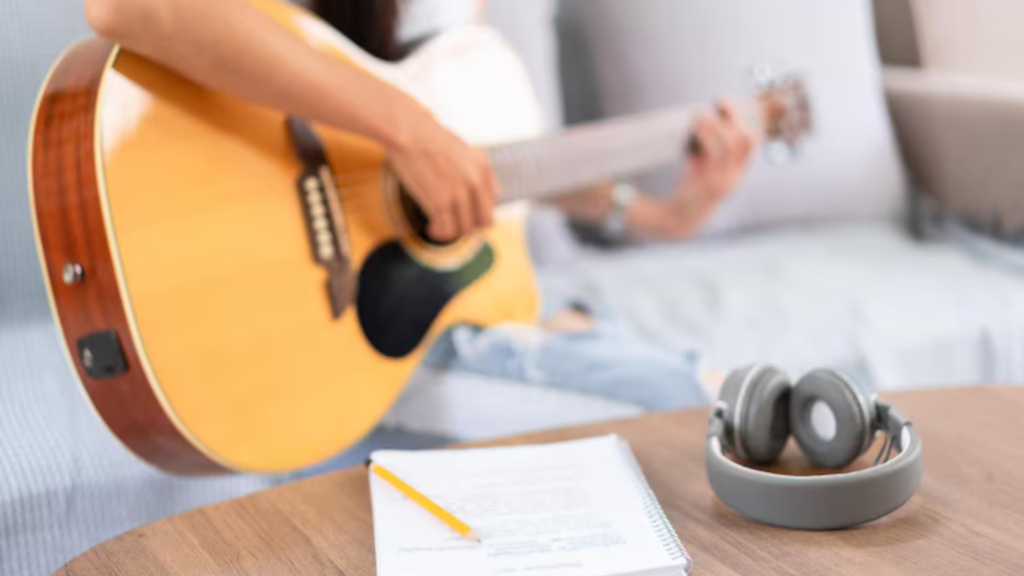Recent studies by scientists focused on how musical interventions affect the quality of life connected to health. The present study is a systematic review and meta-analysis (a study of earlier works), showing that the application of musical interventions (listening to music, singing, and music therapy) can cause major changes in the mental health state and moderate changes in Health-Related Quality of Life. Although the researchers found that music improved psychological quality of life, they lacked evidence on the kind of music therapy or dosage of music to be employed with great therapeutic impact.
Other of these goals can be linked with anxiety and concern reduction, mood shift, reduction in pain perception during illness or in the period following the surgery, enhancement of self-expression, the search of the motivation, and many more. The approach of using music to achieve these objectives (as well as to improve general quality of life) might alter literally every minute and music therapist is able to help in determining how best to do this in the particular scenario.
How can music influence the quality of our lives

Music may be live or recorded. One can practice both background and deep intentional listening. Music can allow one to communicate blocked or suppressed feelings. One could also find mental relaxation in music. Alternatively, you can apply the Iso Principle and place the music into whatever mood or emotional state you are in at the time, then progressively change the mood of the music, the speed of the music and the intricacy of the same, and so your mood or emotional state will also progressively change to whatever music you hear.
Along with autogenic training or meditation to calm or inspire you to engage in some activity or complete a specific task you have been postponing, music might be background noise. Patients hear the music representing their current affect—that is, negative—then turn to another song reflecting their desired affect—that is, positive. Teaching the patients to combine the inner and exterior experiences and to change to more positive experience and attitude depends on using the musical compositions in sequence. There are iso-principle ideas in modern music therapy.
How can music be used as a therapeutic tool

A high tempo, major key, simple and consonant harmony, moderate volume, high voice range, ascending song, even rhythm and loud timbre define the sensation of enjoyment, for instance. The slow tempo, minor key, soft volume, low pitch, declining pitch, flat or falling intonation, dull timbre, legato, or less energetic performance define sorrow. Sadness brought on by music can cause positive change in state as long as it is not seen as dangerous and with the judgment as aesthetically pleasing.
A strong emotive response of music listening, much depending on the subcortical systems comprises the sense of goosebumps. Strong emotions like chills, which one experiences while listening to music, can be lump on the throat, tingling down the spine, goosebumps, shivering, and sexual excitement. Common patterns of physiology and neurological system would clearly show when someone has chills. Enhanced activation of the sympathetic nervous system explains reactions including an increase in the rate of skin conductance, heart rate, respiration rate, and pupil dilation at the periphery physiological topography.
Listening to music

The brain level findings produce shivers where the mesolimbic reward system is more active and the function of musical arousal brings forth a rewarding aspect. Excellent musical performance does need for precisely that—the whole intellect. This syndrome starts the highest possibility of diversion, pain reliever, thinking, development of fine and gross motor muscles and self expression. For instance, a pentatonic-tuned xylophone has a round sound; its tuning allows one to start playing on it right away and produces wonderful sounds without any incorrect notes.
Using the strings, this instrument is easy to press; even a novice can play some chords with just one or two fingers; ukulele resources already offer an amazing amount of internet resources. Combing the song on the instrument is fun and easy. A qualified music therapist can help one to master the instrument and show the fastest path to become a self-exclaiming musician. Good music development really speaks to the brain.
Conclusion

This offers the strongest stimulus of distraction, pain relief, cognitive ability, development of fine and gross motor skills, and expression of one self. There are instruments that seem to be freely available for expression. One can learn to play the ukulele provided the patient can employ somewhat more cognitive resources.
Although the strings of this instrument are not difficult to press, even the beginning chords can be armored with one or two fingers; online offers many ukulele related tools. One can create music using the instrument that is funny and sarcastic. A music therapist can help you to become aware of the quickest path for musical self-expression and to gain hold of the instrument. Singing is the perfect stimulus to the parasympathetic nervous system, hence when the patient can sing, it can be a quite effective therapy.
